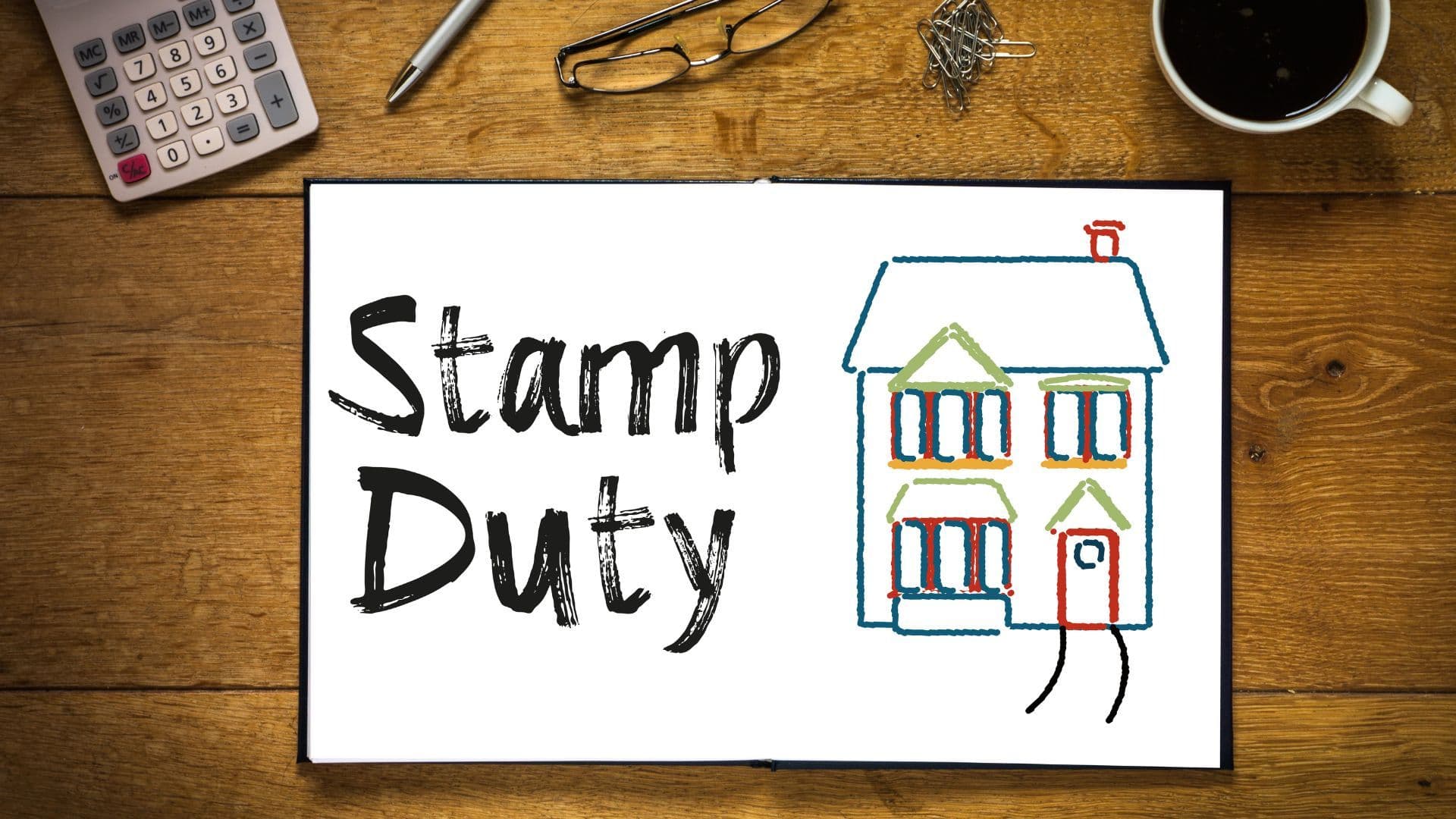Home Of Fair Facts & Tips
Stamp Duty Explained: A Property Buyer's Roadmap
Dive into our comprehensive guide on Australia's Stamp Duty for property buyers. Understand calculations, exemptions, and the impact on your investment choices.

Stamp Duty in Australia is a crucial aspect of property transactions, often influencing buyer decisions and investment strategies. This guide offers a detailed roadmap to understanding and navigating Stamp Duty in the Australian property market.
Introduction to Stamp Duty in Australia
When it comes to buying property in Australia, understanding Stamp Duty is as crucial as finding the perfect location. Stamp Duty, a form of tax levied on property purchases, plays a significant role in the Australian real estate market. It's not just an additional cost; it's a pivotal factor that can influence your property investment decisions.
Understanding Stamp Duty: What It Is and Why It Matters
Stamp Duty, also known as transfer duty or conveyance duty, is a tax imposed by Australian states and territories on property transactions. This tax is calculated based on the property’s purchase price or market value, whichever is higher. It’s a one-time fee paid by buyers during the property acquisition process, making it a critical element in budgeting for a property purchase.
The Role of Stamp Duty in Australian Property Market
The impact of Stamp Duty extends beyond individual transactions. It's a significant revenue source for state governments, funding essential public services and infrastructure projects. For buyers, it represents a substantial portion of the upfront costs of buying a property, influencing market dynamics, including property prices and buyer demand.
Calculating Stamp Duty
Understanding how Stamp Duty is calculated in Australia is essential for any property buyer. This section breaks down the various factors that determine Stamp Duty and how these calculations can differ across states.
How Stamp Duty is Calculated
Stamp Duty rates in Australia are not uniform; they vary depending on the state or territory in which the property is located. Generally, the amount of Stamp Duty you'll pay is based on the purchase price of the property or its market value. The calculation often follows a sliding scale: the higher the property value, the higher the percentage of Stamp Duty. This progressive tax structure ensures that those purchasing more expensive properties contribute more in taxes.
However, it's not just about the property price. Other factors can influence Stamp Duty calculations, such as the type of property (e.g., residential, commercial, or investment), whether you're a first-time home buyer, or if the property is a primary residence or a secondary investment.
State Variations: Comparing Stamp Duty Across Australian States
Each Australian state and territory has its own Stamp Duty rates and thresholds, leading to significant variations in the amount of tax payable. For instance, New South Wales might have different Stamp Duty rates compared to Victoria or Queensland. These variations can be substantial, making it important for buyers to be aware of the specific Stamp Duty regulations in the state where they are purchasing property.
Delve further into the state specific variations below: New South Wales Victoria Queensland South Australia Western Australia Australian Capital Territory Tasmania Northern Territory
Buyers should consider these variances as part of their investment strategy, as the Stamp Duty in one state might make a property more or less attractive compared to another state. It’s also crucial for buyers to stay updated on any changes in Stamp Duty laws, as states occasionally adjust rates or thresholds in response to market conditions or policy goals.
Remember, the Stamp Duty rates that you will pay is matched with the property’s location, not where you reside so, if you live in New South Wales and purchasing a property in Queensland, you will be paying Queensland Stamp Duty rates.
Exemptions and Concessions: Navigating the Rules
Understanding exemptions and concessions is crucial for property buyers, as these can significantly reduce the amount of Stamp Duty payable. This part of the article explores who qualifies for Stamp Duty relief and how to apply for it.
Stamp Duty Relief: Who Qualifies and How to Apply
Stamp Duty relief is available under certain conditions, and these can vary from state to state. Common exemptions or concessions include those for first-time home buyers, pensioners, and those buying off-the-plan properties. These concessions can range from reduced rates to complete exemptions in some cases.
To qualify for these concessions, buyers must meet specific criteria set by the state government. These can include conditions like the purchase price being under a certain threshold or the property being used as the primary residence. It's important for buyers to understand these criteria and how to apply for Stamp Duty relief as part of their property purchase process.
Special Cases: First-Time Home Buyers and Other Exemptions
First-time home buyers often receive special consideration when it comes to Stamp Duty. Many states offer significant concessions or even full exemptions for first-time buyers, which can make entering the property market more accessible. Additionally, other categories like charitable organisations and certain types of farming land may also qualify for exemptions or reduced rates. It's essential for buyers to research and understand the specific Stamp Duty rules in their state, as this knowledge can lead to substantial savings. Consulting with a legal or property expert is also advisable to ensure that all potential concessions are explored.
The Impact of Stamp Duty on Property Investment
Stamp Duty is not just a tax to be paid; it's a significant factor that can influence property investment decisions. This section delves into the financial implications of Stamp Duty and strategies for minimising its impact.
Analysing the Financial Implications of Stamp Duty
The cost of Stamp Duty can affect the overall return on investment in property. It's an upfront cost that can be quite substantial, especially for higher-value properties. Investors need to factor in this cost when calculating the potential return on their investment.
Furthermore, Stamp Duty can impact the liquidity of the property market. High Stamp Duty rates can discourage frequent buying and selling of properties, as each transaction incurs a significant tax. This can lead to a more stagnant property market, affecting both buyers and sellers.
Strategies for Minimising Stamp Duty Costs
While Stamp Duty is a mandatory cost, there are strategies that investors can employ to minimise its impact. These include choosing properties in areas with lower Stamp Duty rates or targeting properties just below tax thresholds to avail of lower rates.
Another strategy is timing the purchase to align with potential Stamp Duty holidays or reductions, which some states may offer temporarily to stimulate the property market. Investors should also explore the possibility of Stamp Duty concessions, as discussed in the previous section, which can significantly reduce the cost.
Future Trends and Changes in Stamp Duty Legislation
The landscape of Stamp Duty in Australia is not static; it evolves with changes in the property market and legislative reforms. This section explores recent changes and predicts future trends in Stamp Duty policies.
Recent Changes and Their Implications for Buyers
Recent years have seen several reforms in Stamp Duty legislation across various Australian states. These changes often aim to make the property market more accessible, especially for first-time buyers, or to stimulate the market during economic downturns.
For instance, some states have introduced temporary Stamp Duty concessions or even waivers to counteract market slowdowns caused by economic challenges. Buyers need to stay informed about these changes, as they can significantly impact the cost of purchasing a property.
Predicting Future Trends in Stamp Duty Policies
Looking forward, it's likely that Stamp Duty policies will continue to evolve. Factors influencing future changes could include the overall health of the property market, housing affordability issues, and economic policy directions. There's also ongoing debate about the efficiency of Stamp Duty as a tax and its impact on the property market, which might lead to more substantial reforms in the future.
Prospective buyers and investors should keep an eye on these developments, as they can provide opportunities or pose challenges in the property market. Staying ahead of these changes can be crucial for making informed and strategic property investment decisions.
Conclusion
Understanding Stamp Duty is crucial for anyone involved in the Australian property market. Whether you're a first-time home buyer, an investor, or simply exploring the market, being informed about Stamp Duty can significantly influence your decisions and financial planning. As the property market and legislation continue to evolve, staying updated on Stamp Duty regulations will remain an essential aspect of property transactions in Australia.
Frequently Asked Questions
What is Stamp Duty in Australia?
Stamp Duty is a tax imposed on property transactions in Australia, calculated based on the property’s purchase price or market value.
Does Stamp Duty vary across different Australian states?
Yes, each state and territory in Australia has its own Stamp Duty rates and thresholds, leading to variations in the amount payable.
Are there any exemptions or concessions available for Stamp Duty?
There are various exemptions and concessions available, particularly for first-time home buyers, pensioners, and certain types of properties. These vary by state.
How can I minimise the impact of Stamp Duty on my property investment?
Strategies include choosing properties in areas with lower Stamp Duty rates, targeting properties just below tax thresholds, and timing purchases to align with Stamp Duty concessions.
Can changes in Stamp Duty legislation affect property prices?
Yes, changes in Stamp Duty can influence the property market dynamics, including property prices and buyer demand.
Where can I find the most current information on Stamp Duty?
Current information on Stamp Duty can be found on state government websites, or by consulting with a legal or property expert.
Disclaimer: The opinions expressed in this article are strictly for general informational purposes only and should not be taken as financial advice or recommendations.
Written By

The Craggle Team

